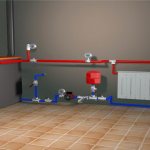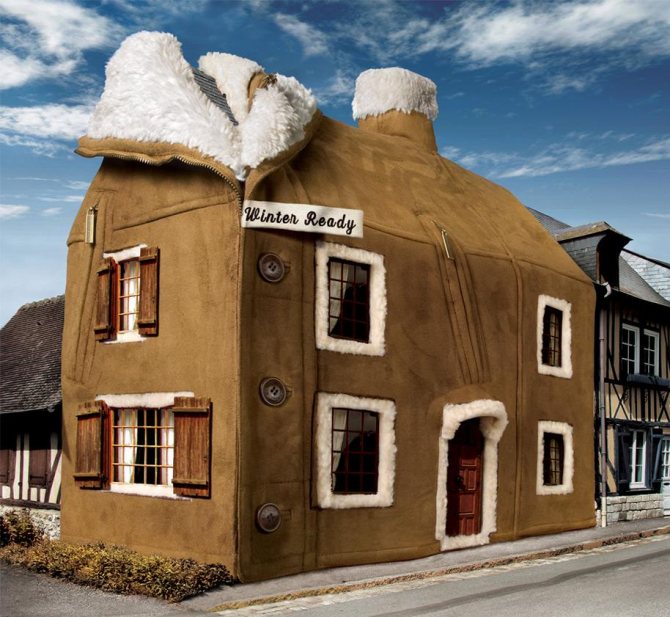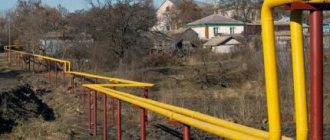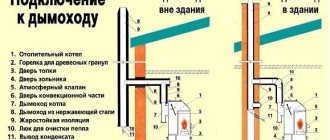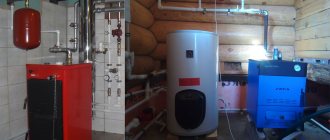What are they doing? They also make the heating system of their country house on gas. However, instead of a container, they use ordinary gas cylinders for household use, which are refilled at exchange stations.
As a result, the former receive gas heating on a turnkey basis, while the latter receive a certain semi-finished product with which they have to suffer.
Autonomous gas heating - the main essence and principle of operation
What is autonomous gas heating? The answer to this question can be simple and understandable. The heating system of the building operates in an autonomous mode, using natural gas as a fuel. The gas supply method can be centralized, through a central pipeline, or individual, using gas cylinders or a gas holder.
The popularity of this type of heating is due to the ease of installation of the entire system and an affordable price, in comparison with other heat sources. Let's get acquainted in more detail with the advantages of gas heating of a private house and, if any, with the disadvantages.
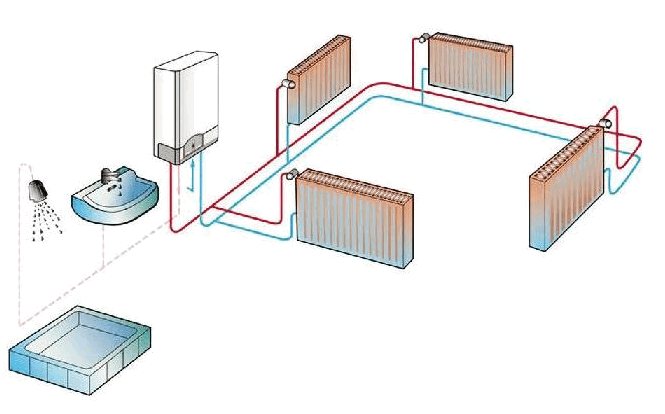
Prices for gas heating of a private house "turnkey"
Price list for design and installation work (pdf, 504 Kb)
Order heating calculation
Choosing one or another heating scheme for a country house, the property owner strives to ensure that the maximum living comfort is provided, but with minimal costs. For many reasons, it is rightfully considered ideal for private houses gas heating, which is characterized by the greatest practicality and economy.
To achieve the optimal combination of gas heating efficiency and costs, it is important to take into account all factors, from the costs associated with the design and installation of the heating system, and ending with the miscalculation of the upcoming operating costs, including the cost of purchasing energy resources. It is also necessary to choose the right equipment, as well as evaluate your own wishes for such a way to improve the comfort of living. We will try to analyze all this more easily in this article.
Advantages and disadvantages of autonomous gas heating
From the point of view of economy and efficiency, gas boilers are by far the most profitable heating devices. Comparing the operation of a gas boiler with an electric heater of a similar power, the first option looks preferable. After installing an autonomous gas heating system, the investment pays off already for 2-3 years of operation.
An autonomous gas heat-generating boiler, according to its technical characteristics, is capable of solving a whole range of tasks at the household level. The boiler will not only quickly and efficiently provide the required temperature inside the house, but also provide domestic hot water for domestic purposes. In many respects, a natural gas heating boiler is best suited for autonomous heating of private houses.
Let us consider in more detail the advantages of natural gas heating equipment:
- natural gas has one of the highest heat transfer coefficients;
- low inertia of gas boilers ensures fast heating of the coolant;
- availability and low cost of natural gas;
- heat generating equipment, equipped with automation, is capable of working without the presence of a person;
- various designs and types of gas boilers are able to efficiently heat both small living quarters and large facilities;
- gas, unlike fuel oil, oil, firewood or coal, is an environmentally friendly type of fuel;
- modern models have a high degree of reliability and are designed for long service life.
The list can be continued if we go to numbers and calculations, however, there are some disadvantages in gas boilers, which can rather be called subtleties of operation and design features.
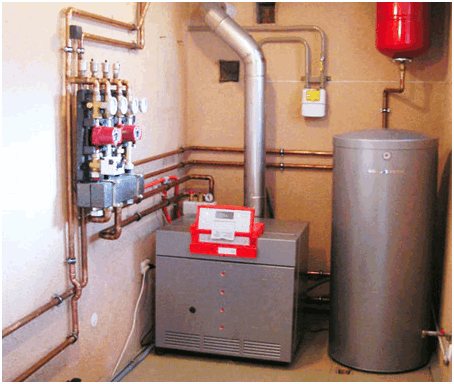

The installation of the gas boiler and the entire heating system in the house is carried out only by specialists with the appropriate qualifications. The installation of boiler equipment is preceded by a lengthy procedure for obtaining a permit for autonomous gas heating.
On a note: Before starting the installation, you must have a ready-made project of the heating system on hand, which must contain all the necessary data and calculations. The project must be carried out in accordance with the existing SNiPs and GOSTs. Only the agreed project, which has received the approval of the energy company, is being put into operation.
The gas heating system puts forward special requirements for the owners of private houses, the observance and implementation of which is a guarantee of the efficient operation of heating equipment and the safety of a residential building.
Cottage heating methods
Suburban areas, as a rule, are located in remote places, far from centralized energy supply systems. In such situations cottage heating
is performed in such a way as to ensure full autonomy for the planned period of time, most often for the winter.
In technical terms, for the implementation of such a task, there are solid fuel boilers for long burning and heating systems with natural circulation of the coolant. Cottage heating
, but for a higher investment, will ensure the use of liquefied gas, which will require a gas boiler, a supply of cylinders or a small gas holder. Heating with liquid fuel is more expensive, although it also provides complete autonomy. And yet, any summer resident will be happy if a centralized gas pipeline passes nearby, by connecting to which you can get an individual
cottage heating with gas
working without interruptions throughout the entire calendar year.
Selecting an autonomous heating system
Having the means and the desire to make autonomous gas heating in your home is half the battle. We will still have to spend a lot of effort to obtain the appropriate permission from the regulatory authorities and authorities. It is at this stage that you will have to choose what type of future autonomous heating system will be, what tasks and requirements for heating equipment will be set.
The answer to many questions will be given by the heating system project. The type of autonomous heating system correctly selected for real conditions, the correct and correct hydraulic and thermal calculations, will ensure the safe installation of equipment in the future.
Today, there are two types of home heating that are most common:
- radiator;
- water heat-insulated floor.
Both systems have their pros and cons. In the first version, we can talk about quick and convenient installation. Laying pipes, installing a boiler and connecting radiators is a common occupation and is not particularly difficult for professionals.
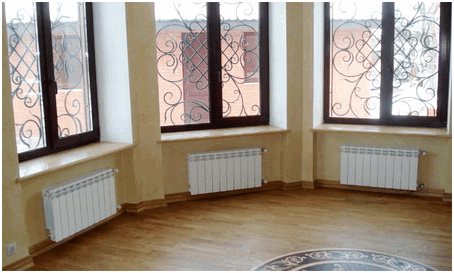

Important! Heating radiators are more effective in rooms with a large glazing area. During the heating process, a heat curtain is created in front of the windows, creating the necessary temperature balance.
There are no significant disadvantages in such a system. The cost of installation is not high, but one must take into account: each radiator costs a lot of money, plus the cost of the boiler and consumables that will be required for laying communications. The larger the heated area, the higher the costs.
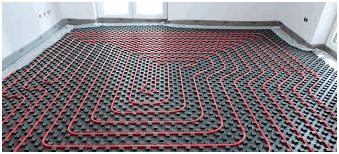

In terms of efficiency, a water-heated floor is more profitable.In the process of work, due to the heated floor surface, the entire internal space of the room is evenly heated. The disadvantages include the high cost of equipment and the complexity of installation.
On a note: Warm air rises evenly upwards, while cold air goes down and so on in a circle. Heating radiators heat the air directly next to them. In a heated room, air exchange is slow.
For example: the air at a height of 1.5 m above the floor level warms up to 200C, then at the floor level the air warms up to only 17-180C. Under the very ceiling, the air is even warmer 24-250C. The result is increased heat loss through the attic and wall panels. The boiler operates in an enhanced mode, the fuel consumption increases.
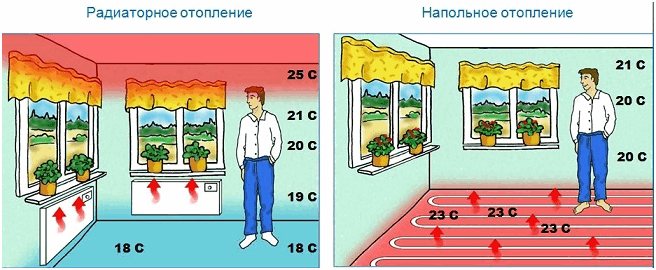

With a water floor, the situation looks different. The temperature required for the operation of the "warm floor" system is lower than the temperature required for the radiators. The gas boiler is capable of operating with maximum efficiency, and the fuel consumption in this case is minimal.
When choosing a heating system for your home, do not forget that underfloor heating has a limited heat transfer - only 50-70 W per m2. In rooms of a large area, with a large number of windows and external walls, significant heat loss will occur.
The diagram shows a two-pipe heating system, traditional for most houses in the private sector.
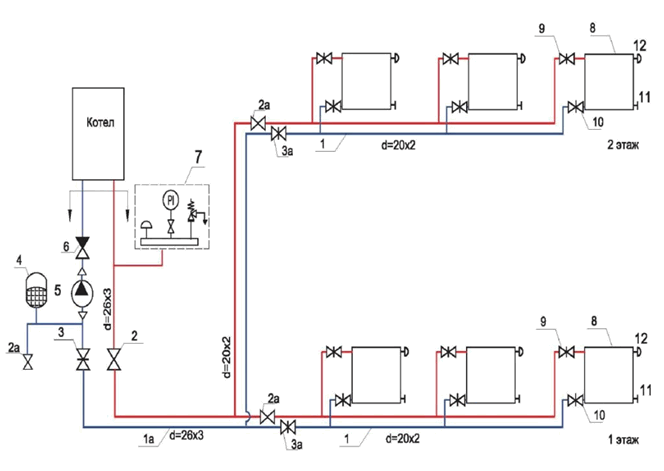

Heating scheme for a two-story house
Gas convectors
Convectors, during operation, do not need intermediate heat carriers. They transfer heat from their heat exchangers directly to the air in the room, which they heat.
Combustion products are discharged outside the house along the core of a coaxial pipe passing through the outer wall. In parallel, along the shell of the specified pipe, clean air is taken and supplied to the combustion zone.
Heating with convectors has the following specific features:
- For installation, no wiring of intra-house pipes and the allocation of a room for a boiler room is required.
- If the room is isolated, then a separate convector will have to be installed in it. And this automatically entails the need to install a separate gas cylinder in each room, or to carry out the distribution of the gas supply throughout the house.
- If the gas heating system uses convectors, then the heat in the premises of the house is distributed extremely irrationally (it is very hot under the ceiling, at the floor level it is rather cold).
- Gas convectors are easy to install and run yourself.
This option is most often preferred in cases where it is required to mount a similar system in a private house, if there is no possibility of connecting to the main gas pipeline.
What is a gas boiler for independent heating
Autonomous gas boilers offered to consumers today meet all possible technological requirements that are placed in front of heating equipment of this type.
The boiler is selected depending on the goals and objectives. For large country houses, cottages with an area of over 150 m2, a floor-standing double-circuit boiler with a capacity of 30-75 kW will be optimal. Often, in large suburban estates, with many buildings and large interiors, hot water boilers are installed. Powerful units capable of providing heat to all buildings and premises available on the farm, while simultaneously providing all the inhabitants of the dwelling with hot water.
For small buildings, for country houses, the best option would be a wall-mounted gas boiler, which quite copes with heating three or four rooms with a total area of up to 80-100 sq. m. Boilers are available with forced ventilation and atmospheric.
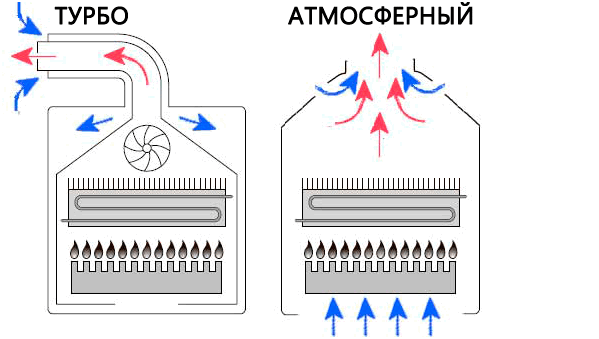

Preferred for most suburban buildings is independent heating, which does not have power supply. A single-circuit gas boiler, in which the coolant naturally spreads through the system, does not need a circulation pump and a fan to force air into the combustion chamber. Such autonomous heating systems are completely independent of the power supply, but their efficiency is an order of magnitude lower than that of boiler equipment equipped with electrical devices and mechanisms.
Also check out the best heating options for a private home.
Two main gasification methods
If you think, is it possible to gasify country housesthen the answer is yes. The supply of gas to the dacha partnership will bring significant benefit to all owners:
- Financial savings.
- System security.
- Environmental friendliness.
- Simple to use.
Gasification of DNT has certain nuances, but in any case, the correct implementation of the process is very important. For garden partnerships there is two options, holding gas, and the price can vary significantly.
First option
The Gardening Association cannot be completely gasified if the majority of the owners of country houses do not agree with this decision. At the general meeting, it is necessary to find out the intentions of the owners by voting.
The decision must be made by majority under the signature. In this case, a certain target contribution is established, which is calculated using a simple formula.
All financial costs associated with gasification are divided equally for all members of the partnership. You need to understand that in the future debts will arise, which will also be divided equally.
If necessary, you can conclude a loan agreement between gardeners who want to get gas at different times. You can calculate the debt for targeted contributions.
In most cases, there is a group of people who do not agree to use gas at all. But according to the rules, these summer residents will be obliged to obey the opinion of the majority.
For horticultural associations, from a legal point of view, there is complete transparency. In this regard, the design does not present any particular difficulties.
But one must also take into account the fact that in the future it may turn out that the partnership will have to fight debtors on its own, to conduct litigation.
Second option
As an alternative solution, gasification is possible only for those members who have expressed their consent. But for this it must be educated non-profit partnership (NP)otherwise, it will be impossible to obtain the specifications. In this case, additional expenses will arise:
- creation of a legal entity;
- creation of an administrative resource - chairman, accountant;
- payment for the administration.
After creation, it will be possible to obtain technical specifications, resolve current issues of the project, approvals, creation gas pipeline... At the same time, only those users of the dacha partnership who are members of the NP become the owners of the laid pipe. Their responsibilities will include the maintenance and repair of this property.
Service contracts are concluded with the NP, and not separately with each owner. It is possible to admit new members, as well as resolve the issue of payment for membership. This option is considered more complicated from a legal point of view and more costly in terms of finance.
conclusions
Gas is the most readily available and cheapest type of fuel. Having installed a gas double-circuit boiler of the corresponding model in your house, you get heating of the interior and hot water supply.
If you have a problem with centralized gas supply, there is a way out. Install a gas storage facility on your site - a gas holder.
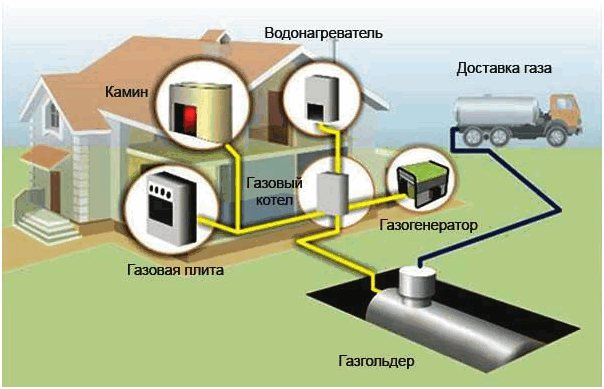

One refueling of the liquefied gas tank is enough for 6-7 months of the heating season.In this situation, your heating system is almost completely independent, there is a real economy and efficiency of autonomous gas heating.
What should you pay attention to?
As mentioned earlier, the supply of gas to garden or dacha associations has a number of features. It should be borne in mind that if it was decided to connect gas to SNT, which is located in the Moscow region, then when connecting, you need to take into account the following points:
- Timely acceptance of gasification fees.
- The terms of validity of the technical conditions, because it will be possible to connect to the pipe only during the specified period. As a rule, the technical conditions are valid for three years.
It is important to understand that gas trust will have to replenish every month... Difficulties may arise with the collection, as well as with contributions to the SNT. It should be borne in mind that the individual owner pays for the consumed volume, the amount for service is divided equally.
In case of non-payment, users face a general shutdown. It often happens that the gas service is reluctant to connect. This applies to cases where the branch is dead-end, will not bring any profit in the future.
Features of the application
Considering the legal aspects, then the application must be submitted precisely from summer cottages:
- First, you need to collect, collect votes by issuing the appropriate protocol.
- After that, you will need to start preparing the documentation, which is transferred to the gas service.
- Development of design documentation.
- Coordination of the project of laying a gas pipeline to the suburban area.
- In the case of formalizing the existing borders, it will be necessary to coordinate them with neighbors, sign the corresponding acts. There may be a need for the signing of the act by the chairman himself.
ATTENTION! Often, the relationship between the site owner and the community chairman is not good. In such cases, it is recommended to arrange a public hearing. It should be borne in mind that this procedure has a number of features.
Short instructions
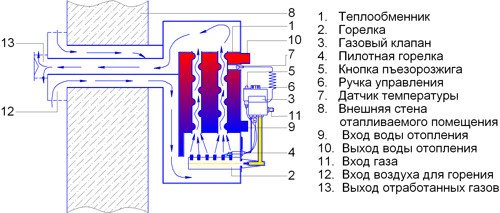

Installation diagram of a parapet-type gas boiler.
Technical documents, which contain the characteristics of the terrain and the plan for supplying gas from the central pipe, are drawn up and executed by licensed organizations. These are usually gas campaign technicians.
The entire installation of equipment for connecting gas (water heaters, boiler, meter, pipes) is done by a team of installers.
Sign a contract for the supply of gas from the central pipe and a contract for the installation of equipment. These are completely different jobs, and they are carried out according to different estimates.
The room where you plan to install the gas equipment must have ventilation, a window, lighting and a concrete floor. If you want to install the entire kit in the kitchen, then you will have to drill holes in the doors and make ventilation near gas installations.
After the completion of the installation, you need to conclude a contract for the maintenance of gas equipment. Call an employee from the gas control department and draw up an act on the commissioning of equipment and gas meters into operation.
Related article: Original do-it-yourself panel: options and production
Take the act of entry and conclude an agreement in the customer service department of the gas campaign for the supply of gas and its payment by the meter.

